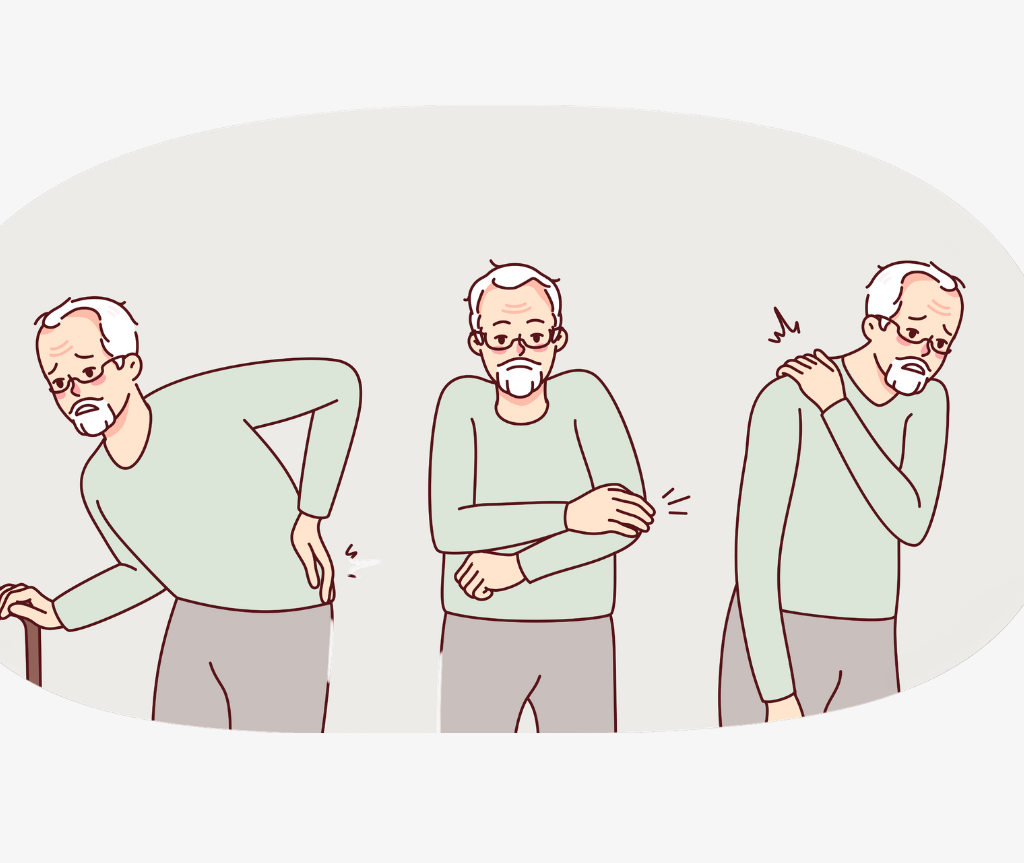Osteoporosis is not just about the brittleness and weakness of bones but is a significant indicator of a larger health issue that can have severe implications if left unchecked.
It’s a common occurrence among older adults, but the silent progression of the disease can affect all age groups. It is characterized by no symptoms until the severity of the condition increases.
This article will delve into the deep understanding of osteoporosis, its development, and how to minimize your risk of being a victim.
What’s Happening to Your Bones in Osteoporosis?
Osteoporosis is a complex condition that primarily exhibits an imbalance in bone formation and resorption, a crucial aspect of maintaining bone health.
Under normal circumstances, these processes are synchronized, ensuring robust and healthy bones. However, with osteoporosis, bone resorption overshadows bone formation, decreasing bone mass and density.
This leads to the characteristic low bone density in osteoporosis, making the bones more porous and increasing the risk of fractures.
Unravelling The Causes of Osteoporosis
Osteoporosis can result from numerous factors.
- A significant one is hormonal changes such as diminished oestrogen levels during menopause in women and low testosterone levels in men.
- Genetic predisposition can also make some individuals more susceptible to osteoporosis.
- Nutritional deficiencies such as calcium and vitamin D can decrease bone density.
- Certain medications, like glucocorticoids and anticonvulsants, cause osteoporosis.
- Lifestyle factors like smoking, excessive alcohol intake, and lack of physical activity can all contribute to its development.
- Chronic diseases like hyperthyroidism, inflammatory bowel disease, and anorexia nervosa can lead to low bone density.
It is important to note that some causes, such as hormonal changes, genetics, and lifestyle factors, are non-modifiable. Still, others, like nutritional deficiencies, medications and medical conditions, are modifiable and can be treated or controlled.
Symptoms To Watch Out For
Osteoporosis, often called the “silent disease,” usually doesn’t display symptoms until a bone fracture occurs.
As the disease progresses, individuals might experience signs like.
- Back pain, especially in the lower back due to a compression fracture of the vertebrae,
- Loss of height over time
- Dowager’s hump, a curvature in the upper back
- Fractures due to weak and brittle bones
- Stooped posture
- Bone and joint pain
It’s essential to remember that not all individuals with osteoporosis experience these symptoms, and fractures can occur without any warning signs.
Diagnosing Osteoporosis
A bone density test is the most common method used to diagnose osteoporosis. It’s a non-invasive test that takes only a few minutes.
Two bone density tests are dual-energy X-ray absorptiometry (DXA) and Quantitative ultrasound (QUS). The test results, given as a T-score, are compared to the average bone density of a healthy young adult of the same sex and size. A T-score of -2.5 or lower is a clear indication of osteoporosis.
Another test that can help to diagnose osteoporosis is a peripheral DEXA, which measures bone density in the finger, radius, and heel.
In addition to the bone density test, other tests such as blood, urine, and imaging tests may be done to check for underlying conditions contributing to osteoporosis.
Usually, bone density tests are recommended for people with an increased risk of osteoporosis, such as those over 65, postmenopausal women, and those with a family history.
Treatments For Osteoporosis
The treatment approach for osteoporosis is tailored according to the individual’s condition and risk factors.
- Medications: Several medications can help slow or stop osteoporosis progression. These include bisphosphonates (alendronate, risedronate, ibandronate, and zoledronic acid), denosumab, and teriparatide. These medications work by slowing down or stopping the process of bone resorption. You can learn more about bisphosphonates.
- Hormone replacement therapy (HRT): HRT can help replace the oestrogen lost during menopause, which can slow down or stop the progression of osteoporosis. You can learn more about HRT.
- Calcium and Vitamin D: Adequate calcium and vitamin D intake is crucial for maintaining healthy bones. A diet rich in these nutrients, or supplements, can help to prevent and treat osteoporosis. You can learn more about the importance of vitamin D for bones.
- Exercise: Weight-bearing and resistance exercises can help to increase bone density and strength. Exercises such as walking, jogging, dancing, and stair climbing are good weight-bearing exercises. You can learn more about exercise for bones.
- Lifestyle changes: Quit smoking and limit alcohol intake, as both can contribute to the development of brittle bones. You can learn more about the impact of alcohol and smoking on bone health.
Preventing osteoporosis
Taking preventive measures is the wiser thing to do, and some of these options are,
- Adequate calcium and vitamin D intake: Calcium and vitamin D are essential for maintaining healthy bones. A diet rich in these nutrients, or supplements, can help to prevent the condition.
- Regular exercise: Weight-bearing and resistance exercises can help to increase bone density and strength. Exercises such as walking, jogging, dancing, and stair climbing are good weight-bearing exercises.
- Quit smoking and limit alcohol intake: Smoking and excessive alcohol consumption can contribute to developing the disease.
- Maintaining a healthy weight: Being underweight can increase the risk of it.
- Hormone replacement therapy (HRT): HRT may be considered for postmenopausal women to replace the estrogen lost during menopause, which can slow down or stop the progression of osteoporosis.
- Medications: Medication may be prescribed to slow its progression for people at high disease risk.
- Screening: Regular bone density tests can help detect osteoporosis early and allow for early intervention.
The Bottom Line
Osteoporosis is a severe condition that significantly impacts bone health, increasing the risk of fractures.
An imbalance between bone formation and resorption marks the condition.
You can prevent and treat it in various ways, including adopting healthy lifestyle habits.



